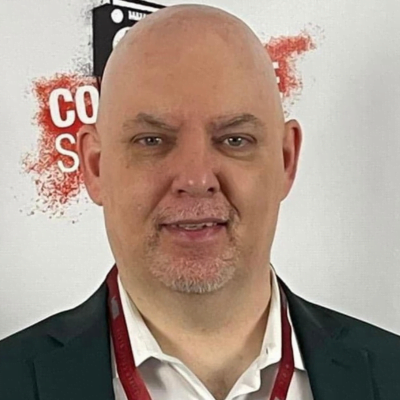Next week, Barrett Sports Media will introduce its third annual Top 20 in sports radio. The six day series highlights the top morning, midday, afternoon and national sports radio shows, the best stations, and the format’s top program directors. This project takes nearly two months to complete because it involves gathering feedback from a large number of sports radio executives. In fact, this year a total of 47 people have contributed to the final results.
Making the process more difficult is the challenge of balancing it out. This means making sure the majority of input isn’t coming from one specific region or company. For example, if I utilized forty executives from CBS/Entercom and none from Cumulus/iHeart, you’d expect the results to shift in the direction of most CBS/Entercom brands. That same situation would arise if I included people who worked on the east coast and none from the Midwest or west coast.
As you may recall, one significant change was made last year. Major markets (1-20) were separated from mid-markets (21 and up). That same approach will be used this year. The reason for it was simple. The industry’s attention (and in many cases advertising buys) often goes towards bigger cities. And for good reason, they face the most pressure and operate under a wider lens.
However, there are brands, shows, and people dominating in their markets which are worthy of being recognized but would otherwise be ignored simply for the fact that they excel in a smaller city. Since no show/station can convince a few million people to relocate to their city and change their market ranking this was a logical way to involve everyone, even if it meant having to increase my workload.
As I stress to folks who ask about these results, there is no perfect way to measure every show, station and individual. So don’t forget that when they’re revealed next week. Each executive values things differently, and audiences in some cities are more attached to a station and their personalities than they are in others. A talent’s value shouldn’t increase by being ranked high on this list nor should it be decreased if they’re not included. It’s a subjective series aimed at recognizing great performers as seen thru the collective eyes of industry leaders. The scorecard that matters most is delivering ratings and revenue for the company which employs you.
Given how the BSM brand has grown over the past few years, I want to remind you that I DO NOT vote in this process. I stress this because it’s often assumed that these are my selections. I may provide the platform where they’re presented and design the images and promote the results via social media but the feedback is a culmination of 47 individuals’ opinions. Those voters represent radio companies such as Entercom/CBS, iHeart, Cumulus, Bonneville, Beasley, ESPN Radio, Premiere/FOX Sports Radio, SiriusXM, and a few smaller groups.
Another item I want to address is the line I walk with clients. Many have asked me about this privately so let me clear the air publicly.
Those who I do business with know that I’m a man of integrity. I pride myself on being a straight shooter and my personal standards are not for sale. My focus when I work with brands is to help them improve their on-air/online/on social product, grow their people, recruit, offer ideas, and provide information to help them gain a competitive advantage. Providing favoritism on the BSM website, podcast or social media channels is not part of the partnership.
I have run this process for two years. During that time, I’ve had clients listed behind competitors when the final rankings came out. Trust me when I tell you, that’s a very uneasy feeling. In some cases it was justified. In others I thought they deserved better.
Although it bothered me, I didn’t see the point of asking executives who I know, trust and respect to offer their input if I was just going to dismiss it and favor someone I do business with. If I was going to do that, I’d either present the awards as my own without contributions from others or stop doing them altogether.
What that taught me is that my approach to consulting is different than what some folks have been used to. More times than not in our industry, people operate in the shadows. It’s the same mindset that exists with sharing information about a brand’s ratings. I think that’s one of radio’s biggest problems. We’re so protective and afraid of what’s said publicly about our brands that we try to hide and limit conversation rather than getting out in front of it. If you can’t share your news in an honest way, listen to an informed opinion, and soak in the feedback provided by executives in your industry who are making decisions on behalf of the top broadcast companies then what exactly are we doing here?
Some may see my approach as a positive. Others may not. I have to do what I think is right and trust that those who know me and work with me understand the difference between a list and the value I bring to them on a regular basis. No answer that I supply is going to please everyone. If a client I work with gets ranked ahead of the competitor the immediate response is, “he’s just looking out for those he does business with.” If I put the competitor higher then I run the risk of pissing off a client. If I stop doing the project altogether then there’s less attention given to the format.
In some ways that’s a compliment because it means the brand has credibility and many look forward to the lists and respect the outcome. My belief is that if a brand or person is doing good work consistently, it’ll be recognized by the voters. Nobody with a 1 share, bad work ethic and poor sounding show is going to fake their way into a high ranking. All I can do is my best to run a fair process and present the industry’s collective viewpoints. Some results will be applauded. Others will be questioned and debated. That’s just the way lists work.
Looking ahead to next week, when you analyze the results I hope you’ll take into account a few key things.
#1 – The goal is to recognize the Top 20 programs/stations/people who performed best in 2017, not which hosts or shows we’d hire tomorrow if we were launching a new sports station. Most voters understand this when making their decisions, but it’s impossible to be inside each executives head and see how much value they place on it.
#2 – If a show or host was on the air for at least six months in 2017 and performed well, they usually are included on the list supplied to industry executives. They DID NOT have to finish the calendar year with the station as that was a bone of contention the past two years and we made an adjustment.
For example, Mike and Mike on ESPN Radio and Mike Francesa on WFAN are on the list because they were on the air for the majority of 2017. Their replacements, Wingo and Golic, and Carlin, Maggie and Bart will be eligible for consideration next year should we do this project again and they anchor their current shows for at least six months and deliver positive results.
#3 – If a show kept its foundation in place, but experienced some change in 2017, they ARE eligible. A few examples would be WFAN Mornings with Boomer Esiason which lost Craig Carton, Mike Valenti on 97.1 The Ticket who lost former partner Terry Foster to retirement, Gio and Jones who previously hosted mornings on CBS Sports Radio, and Stephen A. Smith who hosted a local show on ESPN NY/LA. There were a few local shows which made changes and didn’t make the initial cut because they didn’t have as strong of an impact in their local market as others had in their markets.
Before I wrap this up, I want to explain how the voting works.
Each executive is tasked with ranking their top 20 in each category in exact order. A 1st place vote is worth the most points. A 20th place vote is worth the least. The forty seven executives review each category, make their selections and then send them in. I add up the totals for each show/station/individual and from there it comes down to who earned the most votes. It’s similar to how players are voted on for an MVP award.
I hope you’re looking forward to seeing who earned the sports radio industry’s respect in 2017. The full schedule can be seen by clicking here. The process starts Monday January 29th and ends Monday February 5th.
Also, if you’re going to be on radio row in Minneapolis, send me an email or a message on Twitter. I’ll be arriving in the Twin cities on Tuesday afternoon, and making the rounds on radio row Wednesday and Thursday before returning to NY on Friday. I may even tape a few conversations for the third season of the BSM Podcast while I’m out there.
Let the debates begin!

Jason Barrett is the President and Founder of Barrett Media since the company was created in September 2015. Prior to its arrival, JB served as a sports radio programmer, launching brands such as 95.7 The Game in San Francisco, and 101 ESPN in St. Louis. He also spent time programming SportsTalk 950 in Philadelphia, 590 The Fan KFNS in St. Louis, and ESPN 1340/1390 in Poughkeepsie, NY. Jason also worked on-air and behind the scenes in local radio at 101.5 WPDH, WTBQ 1110AM, and WPYX 106.5. He also spent two years on the national stage, producing radio shows for ESPN Radio in Bristol, CT. Among them included the Dan Patrick Show, and GameNight.
You can find JB on Twitter @SportsRadioPD. He’s also reachable by email at Jason@BarrettMedia.com.





